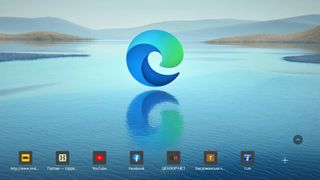- Microsoft Edge now loads features like Favorites 40% faster, thanks to the new WebUI 2.0 framework
- Performance improvements make Edge more efficient for low-spec PCs, reducing resource demands compared to Chrome
- Microsoft aims to enhance Edge further, benefiting users with faster browsing, especially on older hardware
Microsoft has just made some important updates to its Edge browser, making it faster, more responsive, and more efficient even if you’re using a less powerful computer. These changes are thanks to Microsoft incorporating a new system, called the WebUI 2.0 framework, which will help the browser load things like buttons, menus, and settings much more quickly.
Here’s what that means for the latest versions of Edge in Windows 11.
When you use the browser after these changes, things like the ‘Favorites’ bar and the ‘Browser Essentials’ section will open much faster. These reduced loading times are due to the new framework, with Microsoft claiming that
the ‘Favorites’ bar opens 40% faster and the ‘Browser Essentials’ loads 42% faster than before, as reported by PCWorld.
If you’re using a PC with lower specs, such as one with less RAM or with an older hard drive instead of a modern SSD, you’ll also see performance improvements. This could give people using a budget PC that may be classed as ‘lower performance’ or an older device an extra reason to consider using Edge over other browsers like Google Chrome - which has become infamous because of its high RAM demands.

Credit where credit is due for Microsoft
That’s not all the good news, as Microsoft has plans to keep improving parts of Edge by incorporating the WebUI 2.0 framework. In the next few months, you can expect to have a faster, smoother loading experience in Edge overall as Microsoft.
This will make Edge a more appealing choice, especially for everyday users and people who don’t have the most powerful PCs. As tech companies push ahead to offer novelties like AI-powered features, I want to give Microsoft credit for improvements like this that will improve the user experience of people who continue to use older or lower-end hardware.
Using fewer resources and still delivering a solid browser experience might make someone think twice about using Edge as their browser of choice. I think improvements like this are what can convince someone to convert, and hopefully a more popular Edge inspires Google’s Chrome team to also continue improving its rival browser, especially when it comes to how it uses your PC’s resources. That could lead to better browser choices overall which benefits users in the end whether they choose Edge or something else.










 English (US) ·
English (US) ·